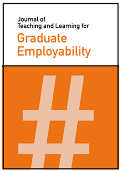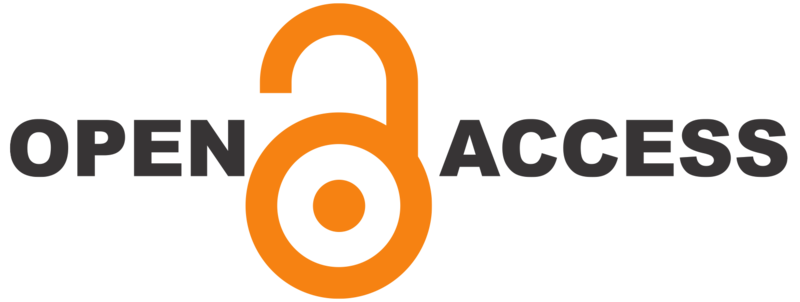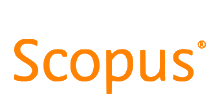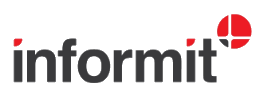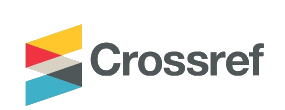Science students develop multiple employability literacies from large, early-year courses without employability modules
DOI:
https://doi.org/10.21153/jtlge2024vol15no1art1717Abstract
Concerns have been raised about the employability of Science graduates, however undergraduate Science curricula rarely focus on building employability. Our goal is to harness existing Science-focused curricula to improve Science graduate employability. In this study we asked whether students could identify learning of employability literacies from their experiences in undergraduate Science courses that do not explicitly teach employability literacies. To address these questions, we employed a short reflective activity in three large first year courses; these courses focused on scientific content and processes, and did not include employability modules. We asked students to choose an employability literacy from a menu and describe how components of the course prompted them to develop this literacy. Students chose a wide variety of literacies and linked their development to multiple aspects of their course experience. They also consistently indicated they had achieved multiple literacies from their course. Course coordinators highlighted the strength-based quality of the reflections, which differed from the usual course evaluation comments given by students. Coordinators who used the reflection activity in the first year were eager to continue in subsequent semesters and years. This mechanism gives students and staff the opportunity to understand the wide and varied opportunities for employability skill development that already exist in undergraduate Science courses. The approach does not require course teaching amendments or student skill-building instruction. This study shows that students can achieve multiple employability literacies from early-year courses, and raises new possibilities around how we can boost students’ understanding and development of their employability.
Metrics
References
Alberts, B. (2008). New career paths for scientists. Science, 320(5877), 289. https://doi.org/10.1126/science.1158719
Aoki, T.T. (1993). Legitimating lived curriculum: Towards a curricular landscape of multiplicity. Journal of Curriculum and Supervision, 8(3), 255–268.
Bennett, D. (2020). Developing employABILITY thinking across higher education. Final Report 2020. Australian Government. https://research.bond.edu.au/en/publications/embedding-employability-thinking-across-higher-education-final-re
Bilican, K., Cakiroglu, J., & Oztekin, C. (2015). How contextualized learning settings enhance meaningful nature of science understanding. Science Education International, 26(4), 463–487.
Birden, H.H., & Usherwood, T. (2013). ‘They liked it if you said you cried’: how medical students perceive the teaching of professionalism. Medical Journal of Australia, 199(6), 406–409. https://doi.org/10.5694/mja12.11827
Boud, D., Keogh, R., & Walker, D. (1985). Promoting Reflection in Learning. In D. Boud, R. Keogh, & D. Walker (Eds.), Reflection: Turning Experience into Learning (pp. 18–40). Routledge Falmer. https://doi.org/10.4324/9781315059051
Callier, V., Singiser, R. H., & Vanderford, N. L. (2014). Connecting undergraduate science education with the needs of today’s graduates. F1000Research, 3, 279. https://doi.org/10.12688/f1000research.5710.1
Claxton, G. (1998) Hare Brain, Tortoise Mind. Fourth Estate.
D’Mello, S., Lehman, B., Pekrun, R., & Graesser, A. (2014). Confusion can be beneficial for learning. Learning and Instruction, 29, 153–170. https://doi.org/10.1016/j.learninstruc.2012.05.003
Dacre Pool, L., & Sewell, P. (2007). The key to employability: developing a practical model of graduate employability. Education + Training, 49(4), 277–289. https://doi.org/10.1108/00400910710754435
Deloitte Access Economics. (2014). Australia’s STEM workforce: a survey of employers. Office of the Chief Scientist, Australian Government.
Department of Education, Skills and Employment. (2021). Job-ready Graduates Package. https://education.gov.au/job-ready
Dewey, J. (1933). How we think: A restatement of the relation of reflective thinking to the educative process. D.C. Heath and Company.
Fuhrmann, C. N., Halme, D. G., O’Sullivan, P. S., & Lindstaedt, B. (2011). Improving graduate education to support a branching career pipeline: Recommendations based on a survey of doctoral students in the basic biomedical sciences. CBE Life Sciences Education. 10(3), 239–249. https://doi.org/10.1187/cbe.11-02-0013
Haggis, T. (2006). Pedagogies for diversity: retaining critical challenge amidst fears of ‘dumbing down’. Studies in Higher Education. 31(5), 521-535. https://doi.org/10.1080/03075070600922709
Jackson, D., & Rowe, A. (2022) Impact of work-integrated learning and co-curricular activities on graduate labour force outcomes. Studies in Higher Education, 48(3), 490-506. https://doi.org/10.1080/03075079.2022.2145465
Johnson, E. (2019). Successful WIL in Science. Department of Education and Training, Australian Government. https://ltr.edu.au/resources/ID16-5420_Johnson_FinalReport_2019.pdf
Knight, P. T., & Yorke, M. (2003). Employability and good learning in higher education. Teaching in Higher Education, 8(1), 3–16. https://doi.org/10.1080/1356251032000052294
Kotter, J. P. (1995). Leading change: Why transformation efforts fail. Harvard Business Review. https://hbr.org/1995/05/leading-change-why-transformation-efforts-fail-2
Kumar, A. (2009). Personal, academic and career development in higher education: SOARing to success. Routledge. https://doi.org/10.4324/9780203938348
Lawrence, E., Ruppel, C. P., & Tworoger, L. C. (2014). The emotions and cognitions during organizational change: The importance of the emotional work for leaders. Journal of Organizational Culture, Communications, and Conflict, 18(1), 257-273. https://www.proquest.com/docview/1647822664?pq-origsite=gscholar&fromopenview=true&sourcetype=Scholarly%20Journals
Maitlis, S., & Sonenshein, S. (2010). Sensemaking in crisis and change: Inspirations and insights from Weick (1988). Journal of Management Studies, 47(3), 551-580. https://doi.org/10.1111/j.1467-6486.2010.00908.x
Maurer, R. (2010). Why do so many changes fail? The Journal for Quality and Participation, 33(3), 37-38. https://doi.org/10.1080/14697017.2011.630507
McGunagle, D., & Zizka, L. (2020). Employability skills for 21st-century STEM students: the employers' perspective. Higher Education, Skills and Work-Based Learning, 10(3), 591–606. https://doi.org/10.1108/HESWBL-10-2019-0148
McHugh, M. (2012). Interrater reliability: the kappa statistic. Biochemica Medica, 22(3), 276-282. https://doi.org/10.11613/BM.2012.031
McInnis, C., Hartley, R., & Anderson, M. (2000). What did you do with your science degree? A national study of employment outcomes for science degree holders 1990-2000. Australian Council of Deans of Science. https://www.acds.edu.au/wp-content/uploads/ScienceR.pdf
National Association of Colleges and Employers. (2017). The class of 2017 student survey report.
Norton, A., & Cakitaki, B. (2016). Mapping Australian higher education 2016. Grattan Institute. https://grattan.edu.au/wp-content/uploads/2016/08/875-Mapping-Australian-Higher-Education-2016.pdf
Office of the Chief Scientist. (2016). Australia's STEM Workforce. Australian Government. https://www.chiefscientist.gov.au/sites/default/files/Australias-STEM-workforce_full-report.pdf
Office of the Chief Scientist. (2020). Australia's STEM Workforce. Australian Government. https://www.chiefscientist.gov.au/sites/default/files/2020-07/australias_stem_workforce_-_final.pdf
Panizzon, D., Corrigan, D., Forgasz, H., & Hopkins, S. (2015). Impending STEM shortages in Australia: beware the ‘smoke and mirrors’. Procedia – Social and Behavioural Sciences, 167, 70-74. https://doi.org/10.1016/j.sbspro.2014.12.644
Pegg, A., Waldock, J., Hendy-Isaac, S., & Lawton, R. (2012). Pedagogy for employability. The Higher Education Academy. https://s3.eu-west-2.amazonaws.com/assets.creode.advancehe-document-manager/documents/hea/private/pedagogy_for_employability_update_2012_1568036839.pdf
Quality Indicators for Learning and Teaching (2022) Graduate Outcomes Survey National Report. https://www.qilt.edu.au/docs/default-source/default-document-library/2022-gos-national-report.pdf?sfvrsn=c5d342c8_2
Rayner, G. M., & Papakonstantinou, T. (2016). The nexus between STEM qualifications and graduate employability: employers’ perspectives. The International Journal of Innovation in Science and Mathematics Education, 24(3), 1–13. https://openjournals.library.sydney.edu.au/CAL/article/view/11041
Reid, A., Richards, A., & Willox, D. (2021). Connecting experiences to employability through a meaning-making approach to learning. Journal of Teaching and Learning for Graduate Employability, 12(2), 99–113. https://doi.org/10.21153/jtlge2021vol12no2art1013
Rowland, S., Gannaway, D., Pedwell, R., Adams, P., Evans, R., Bonner, H., & Wong, K. S. (2020) Legitimising transgression: design and delivery of a science Work Integrated Learning program that draws on students’ extant work in diverse, non-science fields. Higher Education Research & Development, 39(2), 318-331. https://doi.org/10.1080/07294360.2019.1668364
Scott, F. J., & Willison, D. (2021). Students’ reflections on an employability skills provision. Journal of Further and Higher Education, 45(8), 1118–1133. https://doi.org/10.1080/0309877X.2021.1928025
Smith, E., & White, P. (2019). Where Do All the STEM Graduates Go? Higher Education, the Labour Market and Career Trajectories in the UK. Journal of Science Education and Technology, 28, 26–40. https://doi.org/10.1007/s10956-018-9741-5
Yorke, M. (2006). Employability in higher education: what it is - what it is not. In M. Yorke (Ed.) Learning and Employability Series 1 (pp. 1–20). The Higher Education Academy.
Yorke, M., & Harvey, L. (2005) Graduate Attributes and their development. New Directions for Institutional Research, 2005(128), 41–58. https://doi.org/10.1002/ir.162
Yorke, M., & Knight, P. T. (2006). Embedding employability into the curriculum. In M. Yorke (Ed.) Learning and Employability Series 1 (pp. 1-28). The Higher Education Academy. https://www.qualityresearchinternational.com/esecttools/esectpubs/Embedding%20employability%20into%20the%20curriculum.pdf
Downloads
Published
Issue
Section
License
Copyright (c) 2024 Lauren Carpenter, Sophie Hubbard, Scout Basinski, Susan Rowland

This work is licensed under a Creative Commons Attribution-NonCommercial 4.0 International License.

